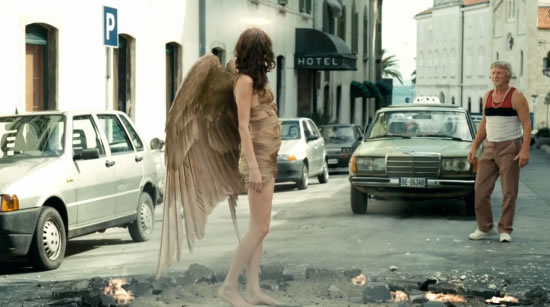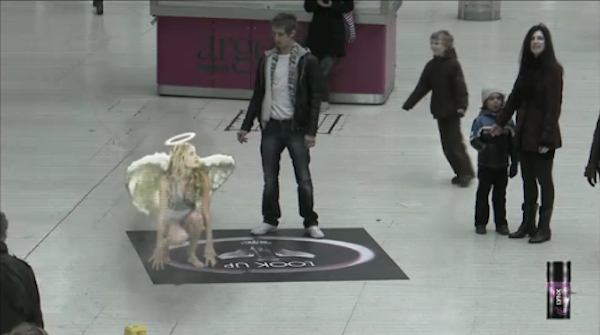I read the article “How Technology is Closing the Loop on Brand Experience” yesterday and was amazed by how companies successfully connected online activities with offline ones, creating more memorable and unique brand experience.
This article summarized some great applications of this notion: first example was the“Lynx Angel Falling Campaign”. The original TV commercial (Video) featuring “falling angels” (beautiful angels actually fall from sky for the ordinary guy using Lynx spray) was followed by the offline interactive activities (Video) in London, Melbourne and other cities. Those activities took place in big public arenas like train station or city square, where had big TV screens. People were exhilarated to see and interact with the animated angels (the same character from the original TV commercial) controlled by a computer technician hidden in the crowd. The surprise and excitement left vivid impression in audience’s mind.
The second example was Asics’s sponsorship to New York Marathon 2010. Asics started “Support Your Marathoner” campaign (video), which invited marathoners’ families and friends to record and send supporting videos/pictures. On the race day, the videos/pictures were broadcasted on the big screen once the contestants’ RPID tags were identified at certain points in the track.
The similar integration of online and offline promotions is a trend now. Two particular insights inspired by this article are: 1) the integration is an effective way to make your communication message unique and strong. Consider the Lynx example, the follow-up offline activities not only lead to additional attention for the original commercials, but also enrich the emotion that evoked by the overall brand communication experience. I believe both the scope and quality of the marketing communication was improved; 2) the creative integration enabled by latest technology is not the end of the job. Although the Asics campaign was beautifully designed and executed, the management team seemed to neglect two things: one is the actual exposure of Asics brand image in the co-branding campaign with New York Marathon, the other is how to amplify the initial publicities generated through the campaign and turn it into something with further impact.
Many companies are confused about how to utilize new technology to make their brand image special. But what I often see is the commoditization of traditional communication practices or low-involvement/no-focus E-promotions. Meanwhile, consumers are avoiding marketing messages and taking more control of communication. This article therefore is a great inspiration in this perspective, providing something companies can start experimenting in order to get an edge in brand building.


